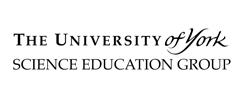Human Circulatory system
Students need to be able to describe the human circulatory system, including the relationship with the gaseous exchange system. They will need to explain how the structure of the heart and blood vessels are adapted to their functions. Students need to know the components of blood and be able to explain how red blood cells, white cells, platelets and plasma are adapted to their functions.
Students often find it difficult to explain what is meant by double circulation, when delivering this topic ensure that students are able to clearly explain how blood is pumped to the lungs and body on each circuit and that it goes through the heart twice in each circuit. Asking students to give a two minute presentation on this (select different students at the start of different lessons), will help them articulate this
It is important when discussing/demonstrating the structure of the heart (for example in dissections) that students are shown the coronary arteries that supply the cardiac muscle, so that they appreciate that it is the blockage of these arteries that can cause heart attacks. There os often a misconception that it is the vessel which supply the heart which are blocked
The valves in the heart chambers are an important feature of the circulatory system so it is worth spending some time ensuring students appreciate the role that the valves play in the system, they should be a feature of any dissection.
Whilst this list provides a source of information and ideas for experimental work, it is important to note that recommendations can date very quickly. Do NOT follow suggestions which conflict with current advice from CLEAPSS, SSERC or recent safety guides. eLibrary users are responsible for ensuring that any activity, including practical work, which they carry out is consistent with current regulations related to Health and Safety and that they carry an appropriate risk assessment. Further information is provided in our Health and Safety guidance.
ABPI interactive website *suitable for home teaching*
This interactive website has a number of sections which are relevant to this topic area of GCSE Biology, these include: •
- The need for a transport system
- The circulatory system
- The heart
- The blood vessels
- The blood and blood clotting
- Blood pressure
- Cardiovascular disease
- Prevention and treatment of cardiovascular disease.
In each section there is information and a brief self-test quiz. These sections could be used for independent learning/homework activities. Different students could be asked to complete specific tasks to answer in class having worked through the website for homework , tasks could include:
- What materials does blood transport throughout the body.
- Why do these materials need to be carried?
- Describe the role of each of the components in the blood.
- Compare and contrast the structures and functions of arteries, veins and capillaries.
- Explain why humans have a double circulatory system.
- Describe the structure of the heart.
- Describe the sequence of events in a cardiac cycle (heartbeat).
- How does the pressure change in each of the chambers during one heartbeat?
- Describe blood clotting and how this helps to prevent disease.
- Suggest ways that a person could help reduce their risk of having a heart attack
Nuffield Advanced Biology Topic Review: Circulation
Although this is quite a dated publication, that was originally intended for 16-19 year old students, there are a range of sections within this publication which could be used as reading material with students.
Students could be provided with an on-line (or paper version) of a section and either individually or working in pairs, highlight key words and phrases, annotate the text to pick out important points and then provide a short half page summary of what they have read or they could read a section and then prepare a Powerpoint presentation to summarise what they have read.
Let's Dissect - the Heart
This video is a detailed and graphic account of the dissection of a pig’s heart. The dissection, and accompanying commentary, shows all of the main features of the heart. It should be shown after students have been made aware of the heart structure.
The video could be used as the prelude for an actual dissection of a heart. There are also slides which highlight the position, structure and function of the main parts of the heart, including chambers, vessels, valves and heart wall. A diagram of the circulatory system allows students to watch a blood cell as it travels around the double circuit.
This resource has been designed as an independent study package, but is probably most useful as a teacher led activity There are obviously a number of issues and sensitivities related to dissection which teachers should always be aware of.
Heart Surgery and Dissection
Produced by the Biotechnology and Biological Sciences Research Council (BBSRC), these materials help students to understand more about how the heart works and also includes a step-by-step guide to dissecting a heart obtained from a butcher.
In the first part of the resource, various aspects of cardiac biology are described and these include the use of magnetic resonance spectroscopy imaging techniques, studying skeletal muscle cells in vitro and the implanting of biomedical devices. The resource then describes in detail the dissection of a heart, obtained from a butcher, which allows the students to:
- identify the internal and external anatomy of a heart
- dissect a heart and be able to model the techniques of a heart surgeon
- discuss heart diseases and disorders, describe how they occur, and name risk factors and possible preventative measures
Electrocardiagrams
Although Electrocardiograms are not a requirement on GCSE Biology specifications, this resource provides a useful context into which required knowledge and understanding of the cardiovascular system can be framed.
The resource includes an animated PowerPoint which shows how blood flow and muscle contraction within the heart is related to the ECG trace. The graphs show how heart rate can be calculated by measuring the period between successive peaks on the ECG. There is also a worksheet for students to complete. This resource would be best used as a teacher led whole class activity, working through the PowerPoint and worksheet.
Off the Blocks
This is a relatively dated publication, but it contains a range of potentially useful resources for teachers. The publication investigates various aspects of physiology in a sport related context, which will appeal to many students.
The publication is organised into "lessons" with teachers notes and activites/worksheets for students towards the end of the publication. Lessons 5,8 and 9 would all be useful for this GCSE Biology topic. The worksheets on pages 86,87 and 98 (as well as many others) could be used both within class or as homeworks without any amendments.
The Bloodmobile
An amusing video which may help some students remember the functions of blood cells.





